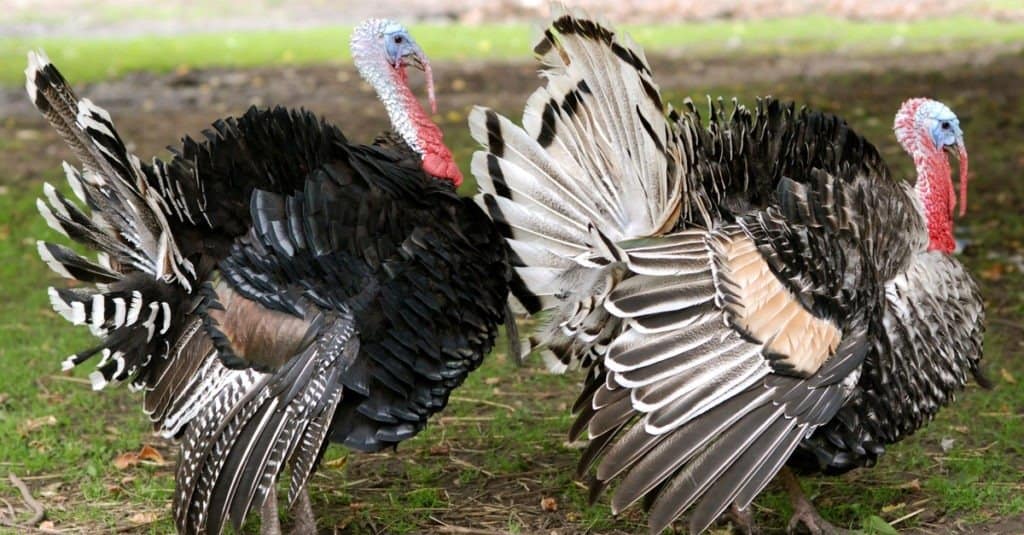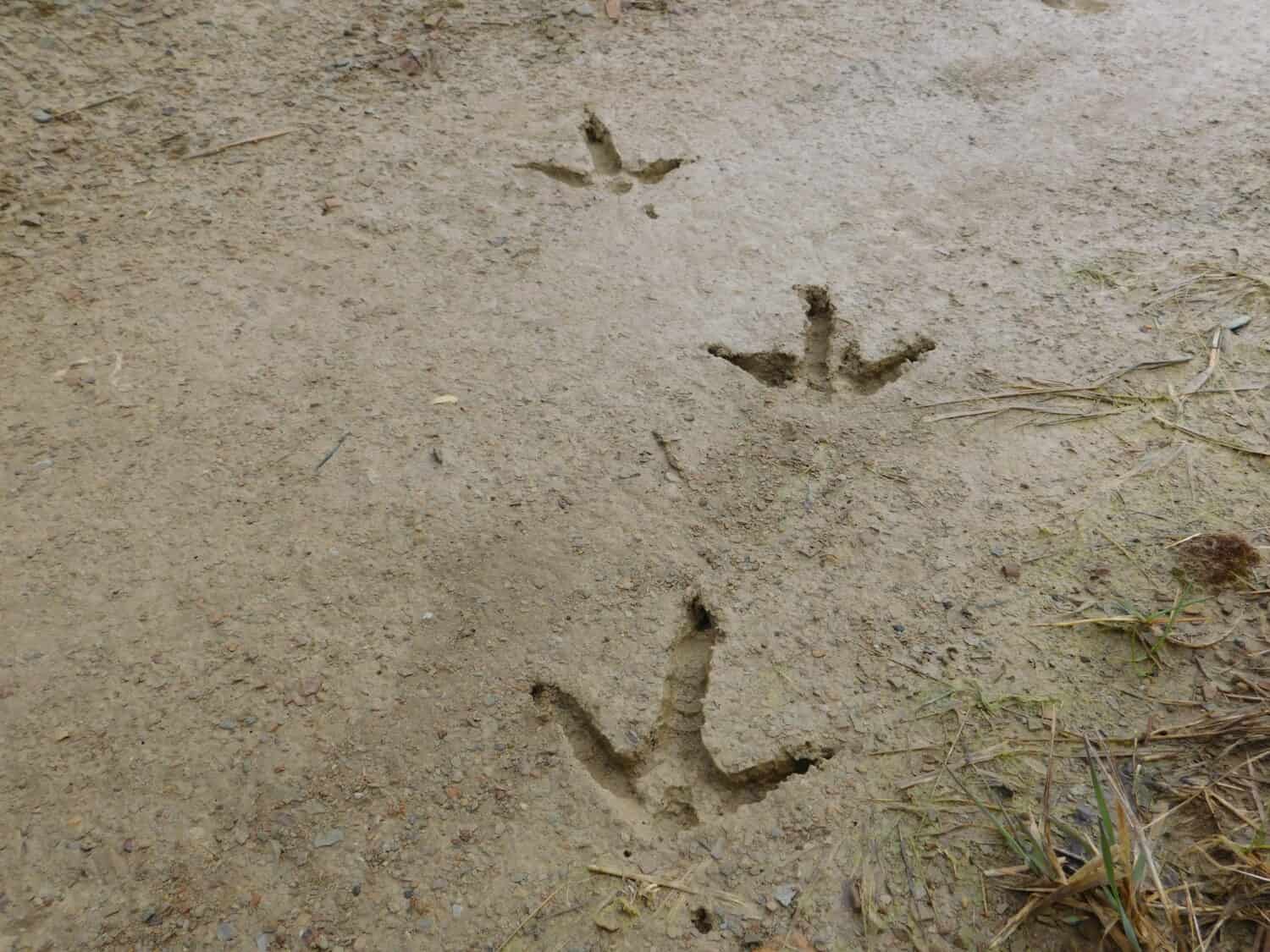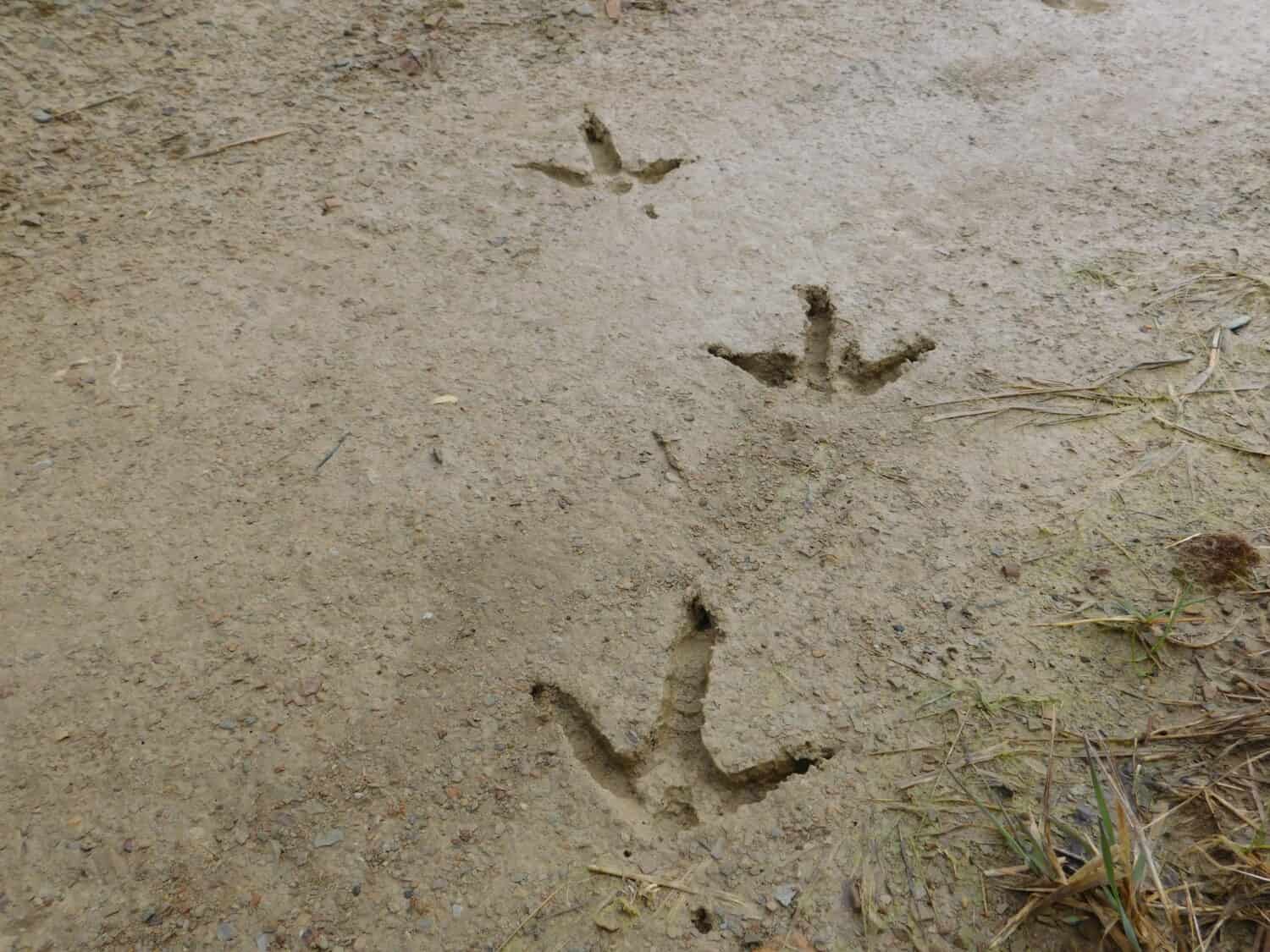Wild turkeys are found throughout North America. These noisy and large birds have a long history. They were first domesticated by indigenous people in North America. Wild turkeys are surprisingly easy to find, even when they hide. They leave scratching marks and turkey tracks, but what do their tracks look like? Follow along to learn how to identify turkey tracks.
About Turkeys
Do you know why turkeys are named turkeys? Interestingly, they get their name from the country Turkey since these birds were coming from the Turkish Levant to Britain. Before we dive into their tracks, let’s learn a little more about turkeys!

There are two turkey species, the wild turkey and the ocellated turkey.
©iStock.com/DA69
Size and Appearance
Wild turkeys are about 4 feet long. They weigh an average of 22 pounds. Turkeys can weigh as much as 38 pounds. Wild turkeys have beautiful bronze, iridescent feathers. On the upper side, the feathers have a white edge. They are filled with feathers, except for their heads. They are best known for their fleshy, red growth called the caruncle. The colors of their feathers vary. Some are purple and green, while others are brown and yellow.

Wild turkeys have fleshy, red growth called the caruncle.
©Kemeo/Shutterstock.com
Diet
Wild turkeys are not picky eaters. They mainly consume seeds, grains, nuts, fruits, vegetables, and insects. However, sometimes they also consume small animals like lizards and fish. Turkeys are hunters and foragers. Their diets vary depending on the season. For instance, during spring turkeys mainly eat leaves and grasses. In the fall, turkeys eat berries, seeds, and insects. Turkeys eat a lot during fall so they have enough fat to survive winter.
Predators
Turkeys have many predators. These large birds are easy prey for large animals like coyotes, mountain lions, and bobcats. It’s easier to prey on young turkeys and turkey eggs. Predators that frequent turkey nests for eggs are rat snakes, large birds, striped skunks, and raccoons. Wild turkeys roost together at night finding strength in numbers. They also have great eyesight and run at the sign of danger. They mainly hide in trees from predators. Although turkeys can fly, it’s in short bursts and distances up to 50 feet.

Striped skunks frequently steal and eat the eggs from a Turkey’s nest.
©iStock.com/Edwin_Butter
Distribution
Wild turkeys are found throughout North America, but their range varies depending on the subspecies. For example, the eastern wild turkey is found in the entire eastern half of the United States and parts of Canada. This was the subspecies the Puritans first encountered. The Florida wild turkey is found across Florida. They are abundant near swamps and scrub patches of palmetto. On the other hand, Rio Grande wild turkeys are native to Texas, Oklahoma, Kansas, New Mexico, Colorado, Oregon, and Utah. However, they were introduced to California and Hawaii. Another wild turkey subspecies is the Gould’s wild turkey which is native to the northern mountains of Mexico and parts of New Mexico and Arizona.
Behaviors
Turkeys are unique animals. Although they are heavy birds, they can fly short distances. They are fast fliers but stay close to the ground when flying. They are also loud birds with many calls. For example, wild turkeys gobble when looking for a mate. This sound is loud enough that you can hear it from a mile away. Interestingly, while competitive, male turkeys court together in large groups since they are polygamous.
Types of Turkey Tracks
Turkeys leave tracks almost everywhere. These animals are popular game birds throughout the United States. When hunting or simply looking for turkeys, it’s a good idea to try and find their tracks. But what do their tracks look like? Are they easy to find? Keep reading to find out.

Wild turkeys leave many tracks.
©K Steve Cope/Shutterstock.com
Snow Turkey Tracks
Turkey tracks in the snow are harder to identify and distinguish from other birds. Snow can melt quickly or become dirty, leaving the prints shapeless. The tracks are simple and like other game bird species. You can see the turkey’s three long toes imprinted into the snow, with its smaller toe in the back. However, sometimes you can’t see the fourth toe’s imprint since it’s so short. The tracks are also never next to each other perfectly. Instead, they are one after another. The track can be about 3.5 to 4.5 inches long and 3.75 to 4.25 inches wide.
During winter, turkeys survive by roosting in trees to get away from snow coverage. They also keep warm with their fat reserves and thick feathers. It’s also common to see turkeys in groups during winter as they keep each other warm.

Turkeys are active in winter and leave tracks in the snow.
©Lindsay P7/Shutterstock.com
Mud Turkey Tracks
Turkey tracks in the mud are easier to see than tracks in the snow. You can also pinpoint more details. Turkey’s toes have a unique pebbly texture. These heavy birds also leave tracks on fine soil. Some of the best places to find turkey tracks are near bodies of water like swamps, lakes, and ponds. You can also look under roosting trees. Usually, when you find turkey tracks, there are feathers and scat nearby.

Turkey tracks in the mud are easy to identify.
©K Steve Cope/Shutterstock.com
Thank you for reading! Have some feedback for us? Contact the AZ Animals editorial team.








